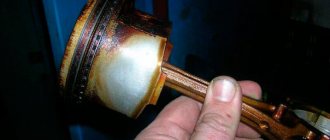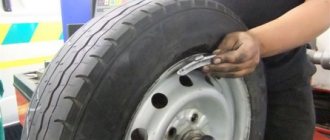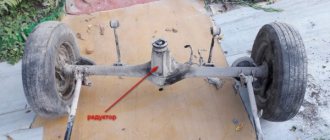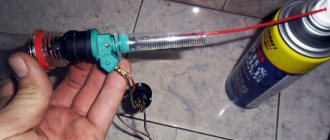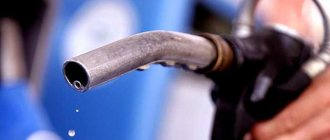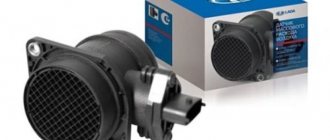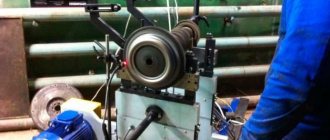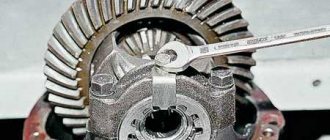Cleaning the carburetor is a mandatory procedure that must be carried out at least once a year or whenever this part becomes dirty. Nowadays, most cars have an injection system. But you can also find those that work with carburetor engines. Carburetors have weak technical characteristics. How can we explain their popularity? The ability to repair and maintain them at home. To do this you will need a minimum set of tools and skills.
Car carburetor design
For normal operation, the engine must receive a fuel-air mixture.
The regulation and supply of the mixture is entrusted to the carburetor, which controls mixing in strict proportions. That is, a carburetor is a device that creates a ready-made mixture of gasoline and air. He supplies it in certain doses to the engine. The node consists of the following elements:
- two chambers separated by a partition;
- jets and channels;
- float with axle;
- needle valve;
- throttle valve;
- Venturi tubes.
This carburetor is called a float carburetor. The principle of its operation is simple: a special line is connected to one of the chambers, through which gasoline is supplied directly from the tank. The next portion of fuel gets inside only after the float with the shut-off valve drops. When the chamber is full, the needle shuts off the fuel supply.
The main jet acts as a calibrator. Through it, gasoline enters the atomizer, then into the mixing chamber. Here the process of mixing fuel with air entering through the throttle valve occurs.
A carburetor is a complex device capable of recognizing several operating modes of an internal combustion engine:
- maximum loads;
- idling;
- average speed;
- cold work.
It should react differently to each mode. In one case, enrich gasoline with oxygen, in the other, minimize the supply of fuel. Therefore, every part of such a complex device must be in good working order and clearly calibrated.
How to adjust the idle speed on a VAZ 2101-VAZ 2107?
Before proceeding with the adjustments, check out the photo below:
Note! Let's start with the fact that the photo above shows the screws through which the idle speed is adjusted. As you can see, the screws are located deep in the carburetor throttle body, so the screw under the number “1” is not visible in the photo. On some cars, bushings are pressed onto both of these screws, thanks to which the screws can only be turned half a turn. If these bushings make it impossible to turn the idle speed adjustment screw properly, then remove the screws and, as a result, break the bushing heads. When the screws are removed, brush off the remaining broken bushings and then screw the screws back into place!
We recommend: Runflat tires: what are they and what are their features
Adjusting the idle speed using a gas analyzer:
Note! So that you understand in more detail, when tightening the screw, the crankshaft speed will gradually decrease, and with the opposite effect, that is, when it is loosened, the speed will gradually increase!
2) Now smoothly proceed to adjusting the “CO” content in the exhaust gases, to do this, rotate the screw indicated under the number “1” in the photo above. When tightening the screw number “1”, the “CO” content in the exhaust gases will gradually decrease, and when unscrewing it will correspondingly increase.
Note! It is necessary to regulate the CO content in exhaust gases in accordance with GOST for today. There is no need to lower the “CO” content below the norm, because in connection with this the content of unburned hydrocarbons “CH” may sharply increase. By the way, when adjusting screw “1”, it can change the crankshaft speed!
3) Finally, turn the screw under the number “2”, thereby bringing the crankshaft speed back to normal. After this, it is also recommended to use a device to check the “CO” content in the exhaust gases. If it becomes necessary to re-adjust both screws, adjust them until engine performance and CO emissions reach normal levels.
Note! After all the adjustments, sit in the car and sharply press and then release the gas pedal. Make sure that when you press the pedal, the engine runs smoothly, and when you release it, the car’s engine should not stall. If the engine stalls after releasing the gas pedal, then increase the crankshaft speed to “800 rpm”. The crankshaft rotation speed is adjusted with the screw number “2”!
Carburetor cleaning products
| Name of carburetor cleaner | Pros + | Minuses - | Price at the time of writing |
| MANNOL 9970 Carburetor Cleaner | Cleans very well and is convenient to use. Read the reviews: 1 → 2 → 3 → 4 → 5 → 6 → 7 → 8 | When stored, the tube taped to the cylinder constantly tends to get lost. | 150 rub. for a volume of 400 ml. |
| XADO JET100 ULTRA | Probably one of the best penetrating lubricants and its lubricating properties are excellent, and it also has a pleasant smell. Read the reviews: 1 → 2 → 3 → 4 → 5 → 6 → 7 | It ends quickly. Small volume. | 342 rub. for a volume of 250 ml. |
| Hi-Gear Carburetor Cleaner | Cleans perfectly. Effectively restores carburetor characteristics without disassembly. Read the reviews: 1 → 2 → 3 → 4 → 5 | The bottle is enough for 2 times. Bad smell. Toxic. | 522 rub. for a volume of 510 ml. |
| Liqui Moly Vergaser-Aussen-Reiniger | Gently cleans the fuel system. Using this composition, you can remove not only carbon deposits and tar deposits from the surface, but also clean channels and throttle valves. Read reviews: 1 | A little expensive. | 527 rub. for a volume of 400 ml. |
| Carburetor cleaner 3ton | Quality, price, carburetor cleaning 5+ Read reviews: 1 | Not found. | 114 rub. for volume 354 ml |
What engine oil to use in a car
Who is too lazy to read: here is a good video review of carburetor flushes
I will also be happy to hear your feedback on the article and possibly correct any inaccuracies in the description of the carburetor cleaning process, and in general, I’m interested in any of your opinions!
Conclusion
Of course, this whole legend was invented by me before writing the article.
